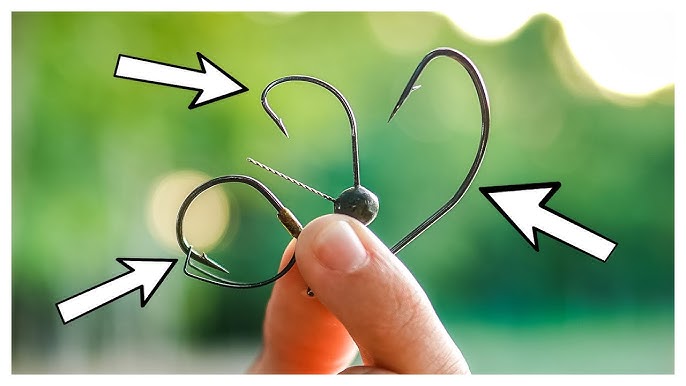Ever wondered why that big fish always seems to slip off the hook? It could be that your hook isn’t sharp enough. Here’s why hook care is one of the most important, yet often neglected, aspects of fishing—and how to make sure you’re not losing your catch.
Are You Losing Fish Because Your Hook Isn’t Sharp?
We’ve all heard the saying, “the big one always gets away,” but have you ever stopped to consider why? One of the most common reasons fish slip off the hook or never get hooked in the first place is that the hook isn’t sharp enough. Whether you’re fishing for bass, trout, or any other species, hook sharpness plays a crucial role in your success—or failure. Surprisingly, hook care is one of the most neglected aspects of many fishermen’s tackle boxes. But taking the time to keep your hooks sharp can mean the difference between landing that trophy catch and watching it swim away.

Why Hook Sharpness Is So Important
When you’re fishing in challenging conditions—such as brushpiles, gravel beds, rockpiles, log jams, or around bridge pilings and boat docks—your hooks can quickly lose their sharpness due to repeated contact with obstacles. A hook that isn’t sharp enough won’t penetrate a fish’s tough mouth, no matter how well you cast or reel in. This can be especially frustrating when you’re targeting larger fish that put up a strong fight.
In addition, when you’re fishing in areas with heavy cover or structure, your hooks are more likely to get damaged or dull from frequent snagging. Even the smallest nick or dull edge on your hook can cause it to fail when you finally hook into a big fish. Having sharp hooks ensures that you can hook fish quickly and firmly, giving you a better chance to land them before they escape.
How to Test Your Hooks for Sharpness
Testing your hooks for sharpness is simple, but it’s a step that many anglers skip, often without realizing how much it impacts their fishing success. Here’s how I personally test my hooks:
- Grab the Shank
First, hold the shank of the hook firmly with one hand. This will give you control of the hook and prevent it from slipping. - Test the Point on Your Thumbnail
Next, gently press the point of the hook against your thumbnail. The key here is to use no pressure. You don’t want to push the hook down; instead, just let the point make contact. - Move the Hook Across Your Nail
While holding the hook in place, gently slide it across your thumbnail. If the hook point digs in and catches your nail, it’s sharp. If it simply slides without digging in, it’s time to sharpen the hook.
This is a reliable way to test sharpness, and it works for both fishing hooks and even your pocket knife. By regularly checking your hooks in this way, you can ensure that they’re always ready to do their job when that big fish takes the bait.

Why You Need a Hook Sharpener
Keeping your hooks sharp is essential, but it requires having the right tools at your disposal. A hook sharpener should be a permanent fixture in your tackle box. Sharpening your hooks on the go doesn’t have to be a time-consuming task—it only takes a few moments to touch up a dull point, and it can significantly improve your chances of landing fish.
If you’re heading out to fish and realize you don’t have a hook sharpener, don’t panic. A diamond-dust nail file, which you can find at most drug stores, makes a great emergency solution. These tools are small, portable, and surprisingly effective for quickly sharpening hooks when you’re on the water.
When to Sharpen Your Hooks
It’s essential to check your hooks for sharpness after every snag or when fishing in rocky or debris-filled areas. Every time your hook hits a hard surface, it risks losing its sharp edge. If you’re fishing for a prolonged period or targeting fish in tough conditions, take a few moments to check your hooks and sharpen them if needed. This small effort can make a huge difference, especially when you’re targeting larger fish that require a solid hookset.
In addition to checking hooks after snags, make it a habit to check them before each fishing trip. This ensures that your hooks are always ready for action and that you’re not leaving anything to chance.
The Impact of Sharp Hooks on Your Fishing Success
The sharpness of your hook can drastically affect your success rate. A dull hook may fail to penetrate a fish’s mouth, causing it to break free or escape during the fight. On the other hand, a sharp hook will grab hold firmly, making it easier to reel in the fish. Sharp hooks provide a more secure hookset, allowing you to keep your catch on the line longer and reduce the risk of losing it.
It’s not just about preventing fish from escaping—it’s also about ensuring that you’re using the right tools for the job. Sharp hooks will penetrate fish mouths more easily, making the overall process smoother and more efficient.
Final Thoughts
If you’re frustrated by the big fish that always seem to slip off the hook, it’s time to take a closer look at your gear. A sharp hook can make all the difference between success and failure on the water. By regularly checking your hooks for sharpness, using the right sharpening tools, and understanding when to touch up your hooks, you can greatly increase your chances of landing that prized catch.
Remember, fishing is about preparation and attention to detail. Don’t let a dull hook be the reason your big catch gets away. Keep your hooks sharp, and make every fishing trip a successful one.









